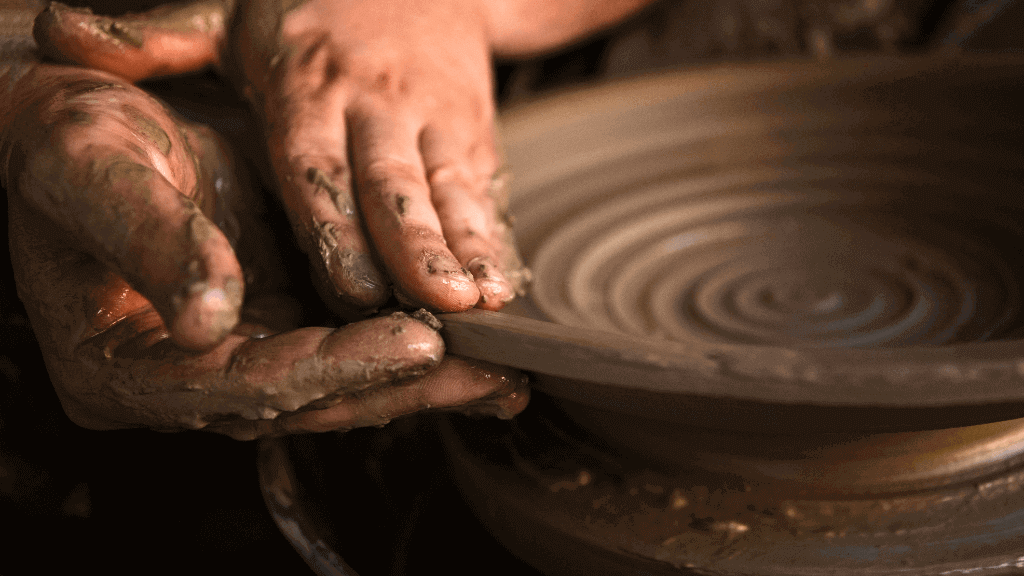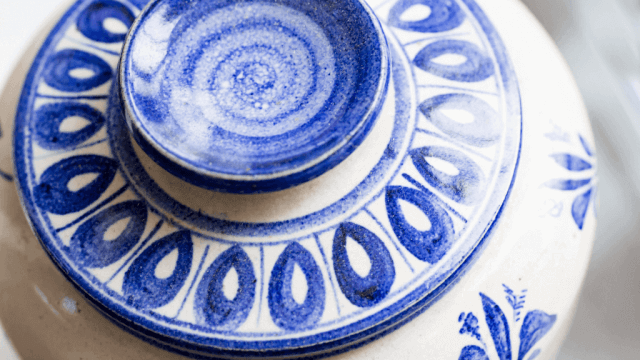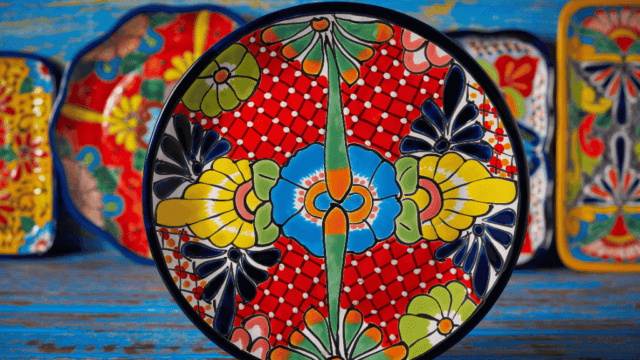To identify authentic Delft pottery, you can look for marks on the base or back of the piece. These marks will indicate where the object was manufactured and may include the name of the pottery or owner/manager. However, not all Delftware bears a mark. You can also check for signs of a transfer or stamp on a piece that claims to be hand-painted, as this is a dead giveaway that the work needs to be more authentic. Also, please look over the bottom surface for a blue emblem mark and look for the painter’s initials and year codes painted on the piece.
What specific characteristics of authentic Delft pottery set it apart from imitations or replicas?
Several characteristics distinguish authentic Delft pottery from imitations or replicas. For example, genuine Delftware is made from bright white clay and has small notches at the bottom of the item. Additionally, authentic Delft pottery is hand-painted and often features blue and white patterns originally copied from Chinese pottery. Some imitations may have an S or X beside the replica Delft mark, which can be rubbed off to sell the item as genuine. One can look at some features of the pottery glaze to identify antique Delft pottery.
Are there any specific markings or symbols commonly found on genuine Delft pieces, and how can you identify them?
Some specific markings and symbols are commonly found on genuine Delft pieces. These include makers’ symbols or initials, year codes, and other marks on the underside of the piece. However, not all Delftware bears a signature. Some modern pieces may say “hand-painted in Holland” and variations of the phrase “Deflt blue” in Dutch or English. Experts can help determine whether something is genuine Delftware by looking for these markings and symbols.
Are certain types of Delft pottery more commonly counterfeited, and if so, how can you avoid purchasing fake pieces?
Certain types of Delft pottery are more commonly counterfeited than others, but factories that copy traditional Delft decorative motifs generally use their factory mark and are not considered forgeries. To avoid purchasing fake pieces, you can check for signs of a transfer or stamp on a piece that claims to be hand-painted. You can also look for the following characteristics to identify genuine Delftware: the color should be cobalt blue, the glaze should be smooth and glossy, and there should be no visible brushstrokes.
What are some reputable sources for purchasing authentic Delft pottery, and what should you look for when selecting a seller?
Some reputable sources for purchasing authentic Delft pottery include stores in Amsterdam and Delft, such as Royal Delft, Léon-Paul van Geenen, and De Porcelijne Lampetkan Antiques. When selecting a seller, look for someone knowledgeable about the product and can provide information on its authenticity. You can also identify genuine Delftware by looking for specific characteristics such as blue, hand-painted designs, and particular markings or stamps. Additionally, you can search for similar items on eBay to learn more about their value.
How does the age and condition of a Delft piece affect its value and authenticity, and what should you consider when assessing these factors?
The age and condition of a Delft piece can affect its value and authenticity. Age is not always the most important factor but can impact price. The state can also be used to determine age, as minor chips that have darkened over time or reveal the actual color of the pottery are signs of age. Year codes and trademarks can also help identify when a piece was produced. Rarity and uniqueness are also factors that can impact price. When assessing these factors, it is important to consider historical and age values.











